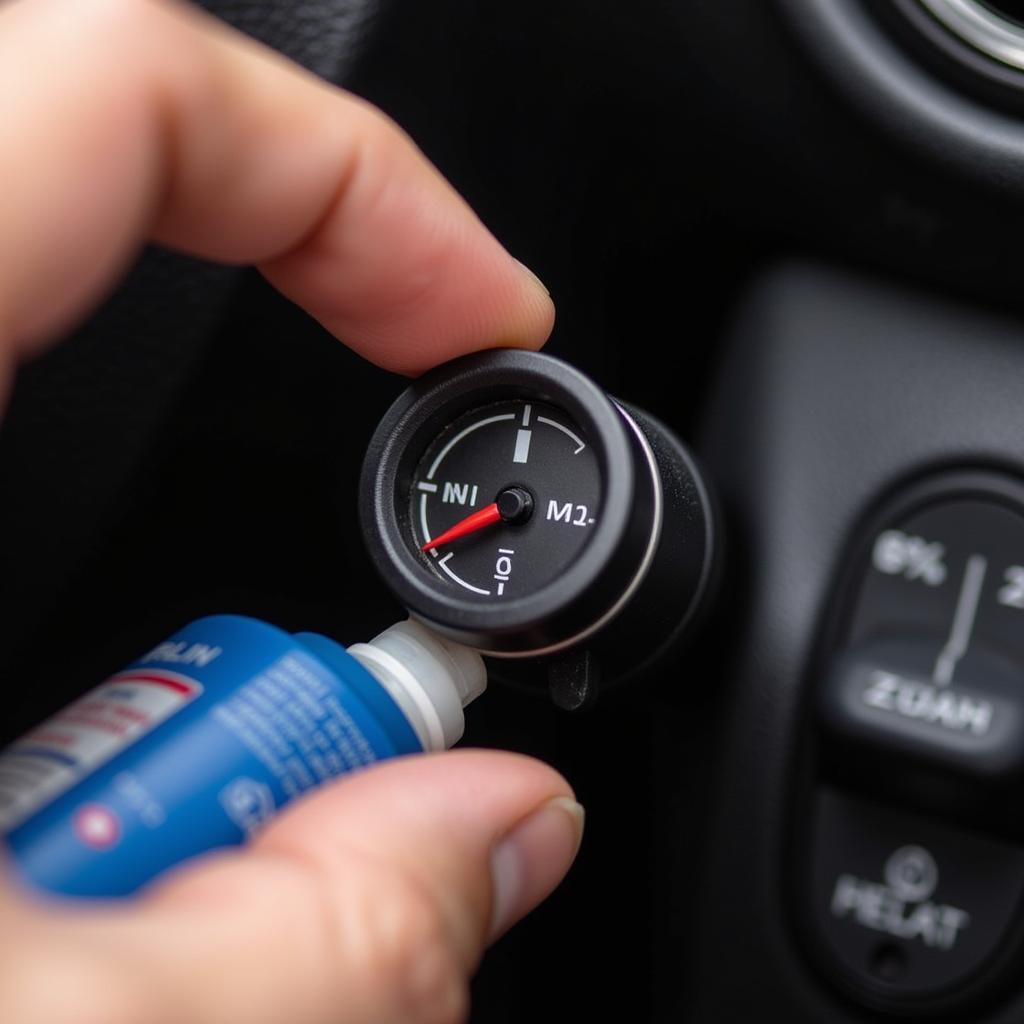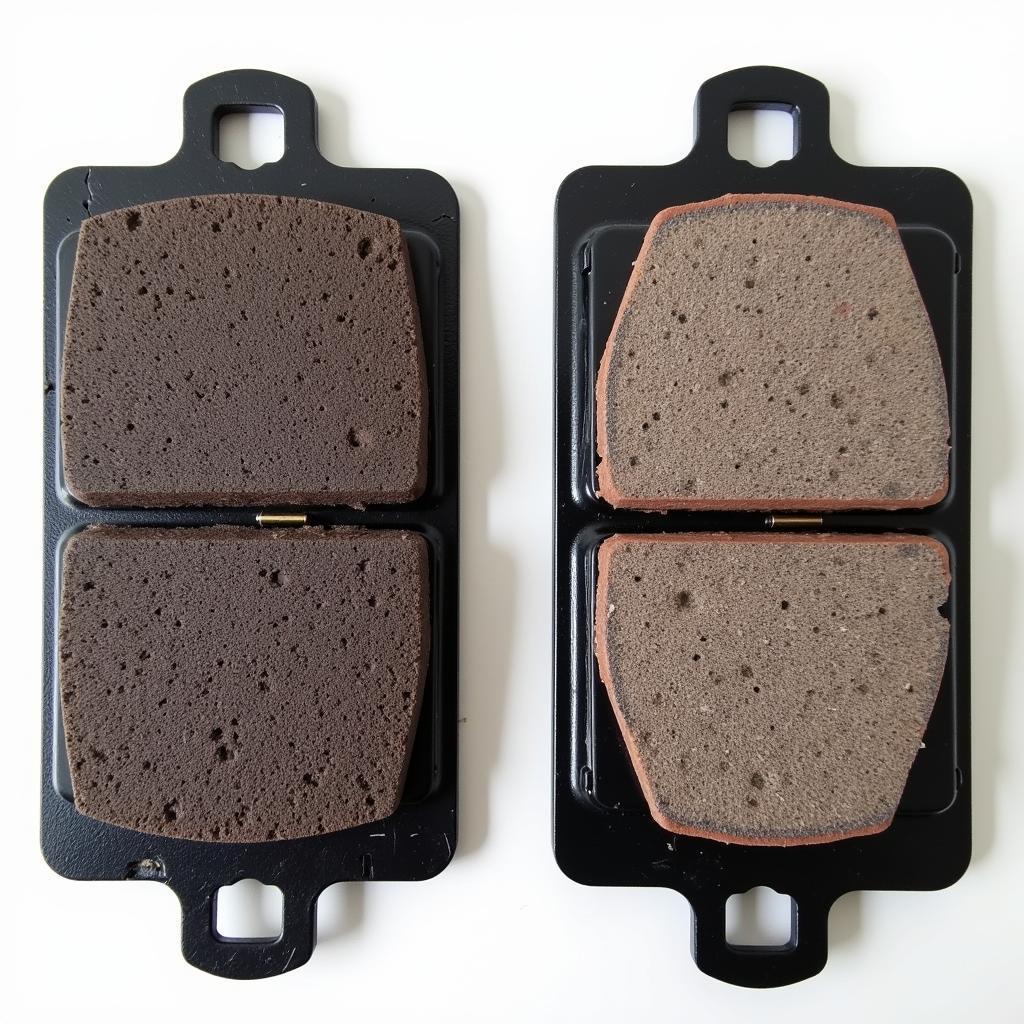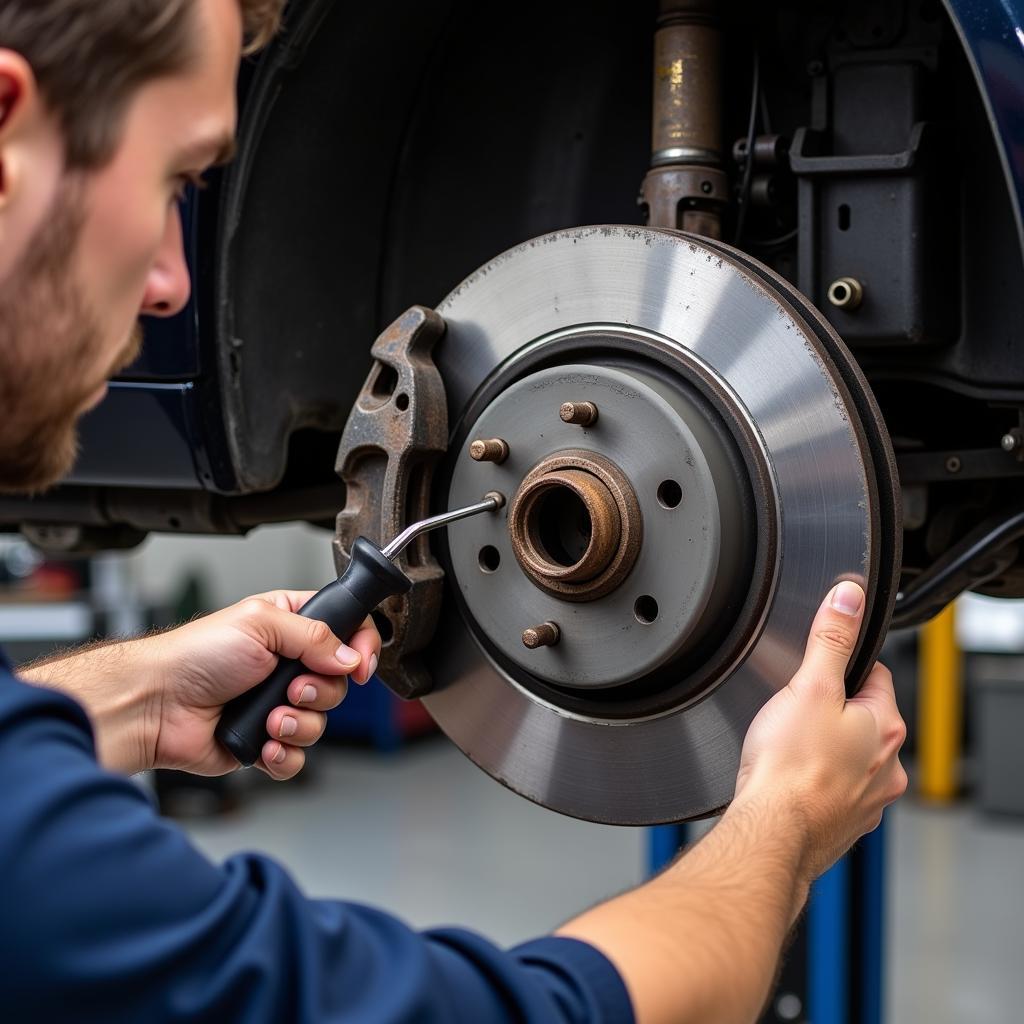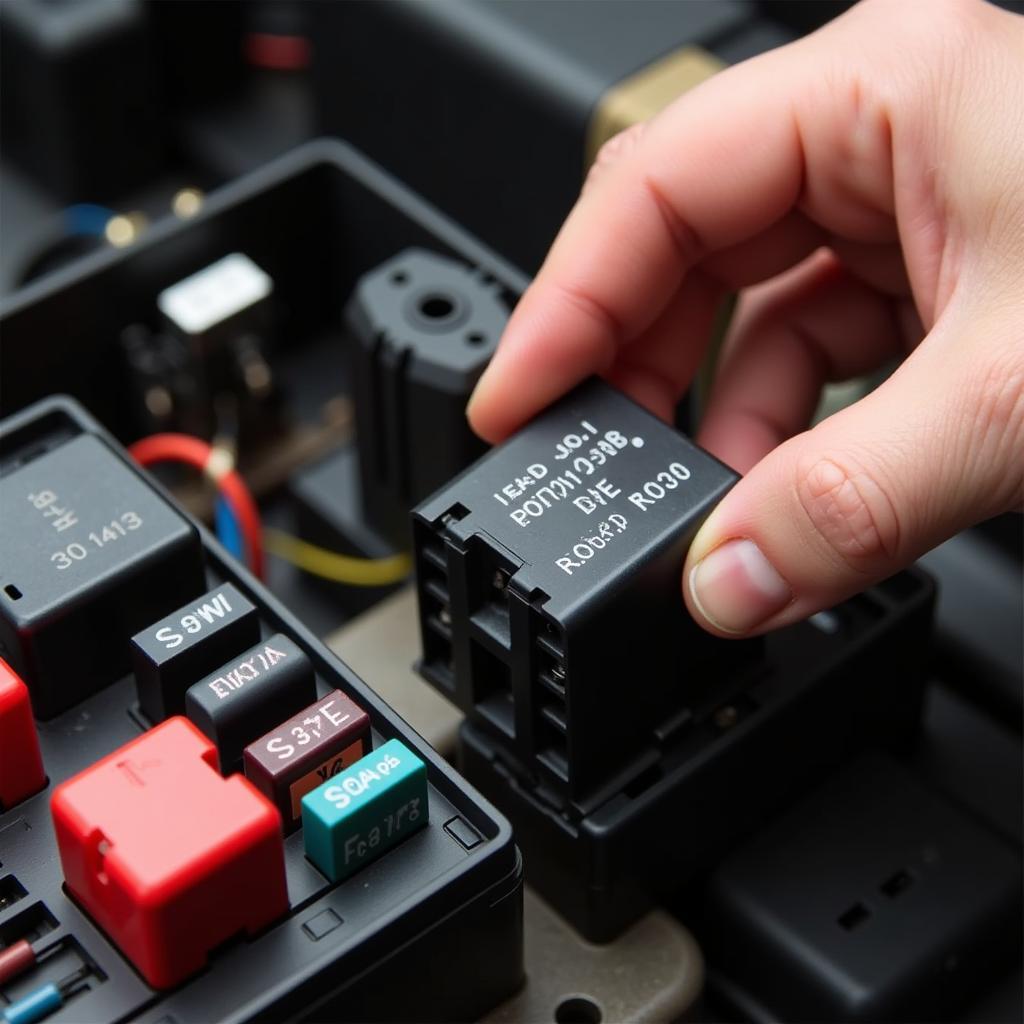The brake pad warning light on your Fiat is a crucial safety feature that alerts you to potential issues with your braking system. Ignoring this warning could lead to reduced braking efficiency and even brake failure, putting you and others at risk.
What the Fiat Brake Pad Warning Light Means
When you see the brake pad warning light illuminate on your dashboard, it usually means one of two things:
-
Worn Brake Pads: The most common reason for this light is that your brake pads have worn down to a pre-determined level. A sensor, typically embedded within the brake pad itself, triggers the warning light when it makes contact with the brake rotor, indicating the need for replacement.
-
Low Brake Fluid Level: Your brake system relies on hydraulic pressure to function correctly. If the brake fluid level is low, it could indicate a leak in the system. This issue can compromise your braking ability and requires immediate attention.
Diagnosing the Problem: Is it the Pads or the Fluid?
 Checking Fiat Brake Fluid Reservoir
Checking Fiat Brake Fluid Reservoir
Before assuming you need new brake pads, it’s essential to rule out low brake fluid as the culprit. Here’s how:
- Locate the brake fluid reservoir: Consult your owner’s manual for the exact location, but it’s typically found near the firewall on the driver’s side.
- Check the fluid level: The reservoir should have “MIN” and “MAX” markings. If the fluid level is below the “MIN” mark, add the appropriate DOT-rated brake fluid (check your owner’s manual).
Important: Never drive a car with low brake fluid. If you need to add fluid, do so carefully and avoid spills. If the fluid level remains low after adding fluid, you likely have a leak, requiring professional inspection.
Inspecting Your Fiat Brake Pads
 Worn Fiat Brake Pads Compared to New Pads
Worn Fiat Brake Pads Compared to New Pads
If your brake fluid level is fine, the next step is to inspect your brake pads. Here’s a simple visual check you can perform:
- Safety First: Engage the parking brake and chock the wheels to prevent the car from rolling.
- Examine the pads: Look through the spaces between the wheel spokes to see the brake caliper and pads. You might need a flashlight for a clearer view.
- Assess pad thickness: If the friction material on the brake pad is less than ¼ inch thick, it’s time for a replacement.
Pro Tip: “Can I drive with the brake pad warning light on?” is a question we often get at Car Diag Tech. Our expert, John Miller, advises, “While you might be able to drive a short distance, it’s crucial to address the issue immediately. Delaying brake pad replacement compromises safety and can lead to costly repairs later.”
What if the Light Stays On After Replacing the Pads?
Sometimes, the brake pad warning light might remain illuminated even after replacing the brake pads. This could be due to:
- Faulty sensor: The brake pad wear sensor itself could be damaged or malfunctioning.
- Wiring issues: A loose or damaged wire connecting the sensor to the vehicle’s electrical system could be the problem.
- Resetting the system: Some Fiat models require a reset of the brake pad warning system after pad replacement.
If the light persists, it’s best to consult a qualified mechanic or visit a Fiat dealership for diagnosis and repair.
Fiat Brake Pad Warning Light: Models and Variations
The appearance and behavior of the brake pad warning light can vary slightly across different Fiat models. Here are a few examples:
- Fiat 500: The warning light is usually a yellow circle with an exclamation mark inside, accompanied by a message on the dashboard display.
- Fiat Ducato: This model might have a dedicated brake pad wear indicator light that illuminates in red.
- Fiat Punto: Similar to the 500, the Punto usually displays a yellow warning light with a brake symbol.
For precise information on your specific Fiat model, always refer to your owner’s manual.
Preventative Maintenance: Keeping Your Brakes in Top Condition
 Close-up of a Mechanic Inspecting Fiat Brakes During a Routine Service
Close-up of a Mechanic Inspecting Fiat Brakes During a Routine Service
Regular brake maintenance is crucial for ensuring optimal performance and safety. Here are some tips:
- Adhere to the recommended service intervals: Consult your Fiat owner’s manual for the suggested brake inspection schedule.
- Pay attention to unusual noises: Squealing, grinding, or scraping sounds during braking can indicate worn pads or other brake problems.
- Brake smoothly: Avoid hard braking whenever possible to minimize wear and tear on your brake components.
- Consider professional inspections: If you’re unsure about the condition of your brakes, a qualified mechanic can perform a thorough inspection.
“Preventative maintenance is key to avoiding unexpected brake issues,” says John Miller, “Regular checks can save you money and hassle in the long run.”
Addressing Your Fiat Brake Pad Warning Light Promptly
The brake pad warning light on your Fiat is not something to ignore. By understanding its meaning, performing basic checks, and addressing the issue promptly, you can ensure the safety and reliability of your Fiat’s braking system. Remember, if in doubt, always consult a qualified mechanic for diagnosis and repair.

